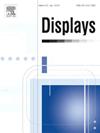UnSP: Improving event-to-image reconstruction with uncertainty guided self-paced learning
IF 3.7
2区 工程技术
Q1 COMPUTER SCIENCE, HARDWARE & ARCHITECTURE
引用次数: 0
Abstract
Asynchronous events, produced by event cameras, possess several advantages against traditional cameras: high temporal resolution, dynamic range, etc. Traditional event-to-image reconstruction methods adopt computer vision techniques and establish a correspondence between event streams and the reconstruction image. Despite great successes, those methods ignore filtering the non-confident event frames, and hence produce unsatisfactory reconstruction results. In this paper, we propose a plug-and-play model by using uncertainty guided self-paced learning (dubbed UnSP) for finetuning the event-to-image reconstruction process. The key observation of UnSP is that, different event streams, though corresponding to a common reconstruction image, serve as different functions during the training process of event-to-image reconstruction networks (e.g., shape, intensity, details are extracted in different training phases of networks). Typically, UnSP proposes an uncertainty modeling for each event frame based on its reconstruction errors induced by three metrics, and then filters confident event frames in a self-paced learning fashion. Experiments on the six subsets of the Event Camera Dataset shows that UnSP can be incorporated with any event-to-image reconstruction networks seamlessly and achieve significant improvement in both quantitative and qualitative results. In summary, the uncertainty-driven adaptive sampling and self-learning mechanisms of UnSP, coupled with its plug-and-play capability, enhance the robustness, efficiency, and versatility for event-to-image reconstruction. Code is available at https://github.com/wangsfan/UnSP.
求助全文
约1分钟内获得全文
求助全文
来源期刊

Displays
工程技术-工程:电子与电气
CiteScore
4.60
自引率
25.60%
发文量
138
审稿时长
92 days
期刊介绍:
Displays is the international journal covering the research and development of display technology, its effective presentation and perception of information, and applications and systems including display-human interface.
Technical papers on practical developments in Displays technology provide an effective channel to promote greater understanding and cross-fertilization across the diverse disciplines of the Displays community. Original research papers solving ergonomics issues at the display-human interface advance effective presentation of information. Tutorial papers covering fundamentals intended for display technologies and human factor engineers new to the field will also occasionally featured.
 求助内容:
求助内容: 应助结果提醒方式:
应助结果提醒方式:


